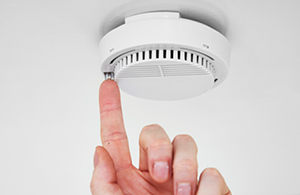
Carbon monoxide (CO) is a colorless, odorless, tasteless, and toxic gas. Smoking a cigarette; idling a gasoline engine; and burning fuel oil, wood, kerosene, natural gas, and propane all produce CO. High levels of CO can be generated by appliances that are defective or improperly installed or maintained. CO can also enter a home if an appliance venting system or chimney becomes blocked. This is why it’s critical to have heating systems tuned up regularly and chimneys cleaned annually
Signs of improper appliance operation that can generate high CO levels.
- Soothing, especially on appliances and vents
- Unfamiliar or burning odor
- Increased moisture inside of windows
Carbon monoxide can be deadly.
High levels of carbon monoxide can make you dizzy, give you headaches, cause shortness of breath, nausea, fatigue or flu-like symptoms. Extended exposure can result in brain damage or death. Young children; the elderly; people with heart disease; and those under the influence of alcohol, drugs, or medication are particularly susceptible to carbon monoxide poisoning.
If you suspect that CO is present – act fast!
- If you or a family member shows physical symptoms of carbon monoxide poisoning, get everyone out of the building and call 911 or your local fire department.
- If it is safe to do so, open windows to allow entry of fresh air, and turn off any appliances you suspect may be releasing the harmful CO gases
- If no one has physical symptoms of CO poisoning, but you suspect that CO is present, call your propane retailer or a qualified service technician to check CO levels and your propane equipment.
How to prevent carbon monoxide poisoning.
- Have a qualified service technician check your propane appliances and venting systems annually, preferably before the heating season begins.
- Install UL-listed CO detectors on the ceiling of every level of your home.
- Never use a gas oven or range-top burners to provide space heating.
- Never use portable heaters indoors unless they are designed and approved for indoor use
- Never use a barbecue grill (propane or charcoal) indoors for cooking or heating.
- Regularly check your appliance exhaust vents for blockages.
If you have any questions about carbon monoxide and your home heating systems, please do not hesitate to give us a call.

